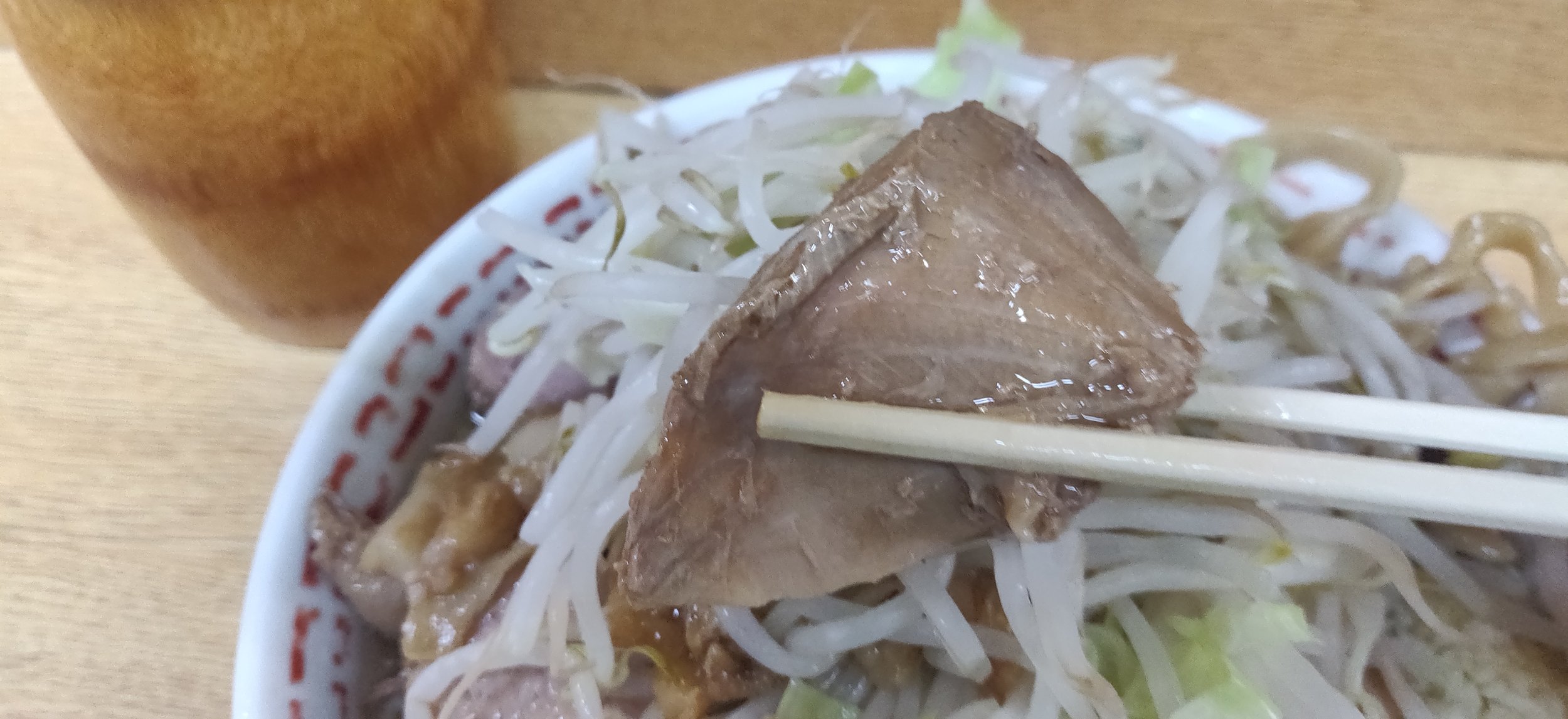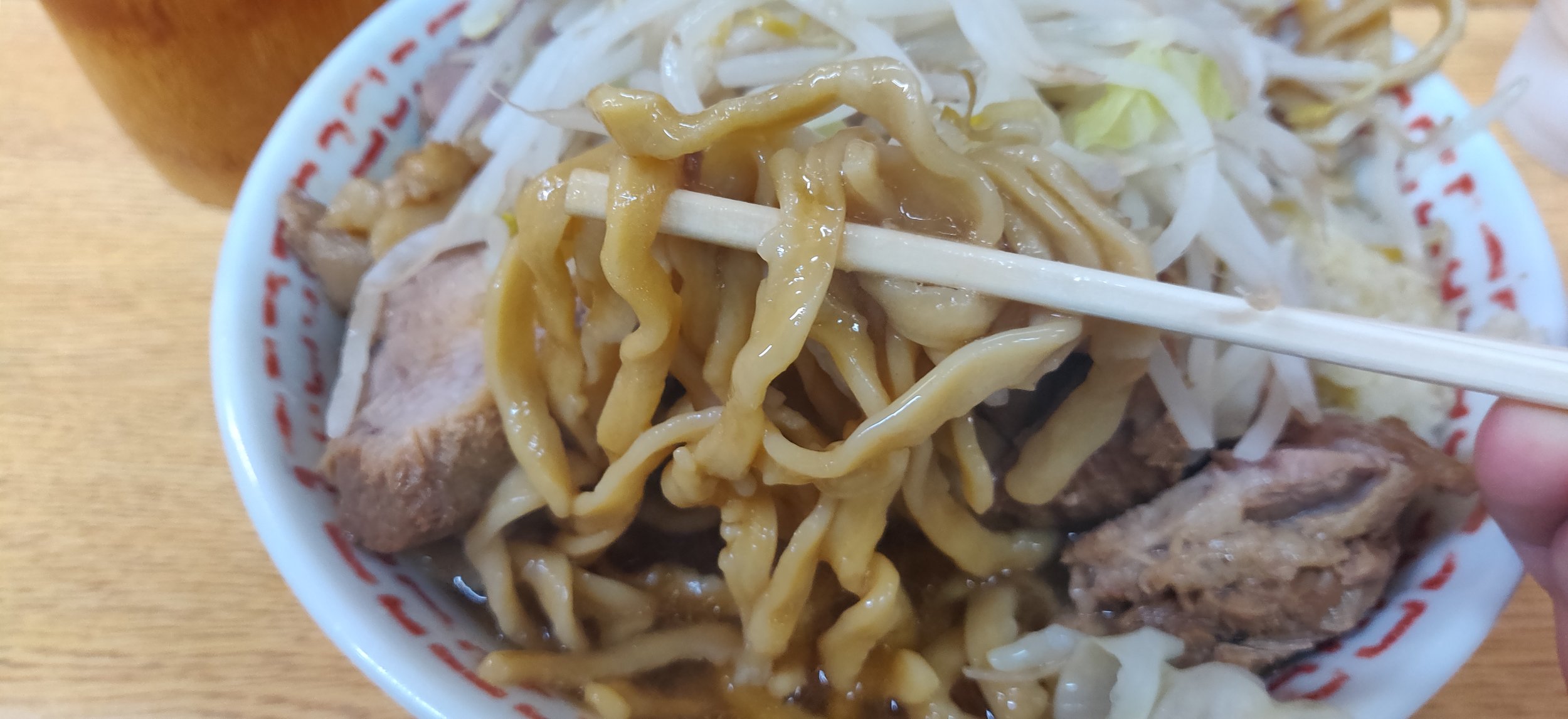Ramen Jiro Kannana Shin Shin Daita (ラーメン二郎 環七新新代田店): The Hard Nosed Jiro; Shin Daita, Tokyo
So I need to apologize in advance here for the lack of photos. The master at Ramen Jiro Kannana Shin Shin Daita is notoriously strict on his rules, one of which is no photos except for the ramen and another is avoid being on your phone/eat as quickly as possible. I tried to sneak as many photos as I could, but as I would like to remain a customer at this location (master is known to give out bans), I wasn’t able to get as many as I would have liked. Next time I go, I’ll see if I can get other shots, but will have to make do with what I have for now. Anyways, the shop is open everyday, 11:00-15:00 and currently closed for dinner due to Covid. The shop will take holidays from time to time and change up their shop hours so definitely check their twitter for more up to date info. Shin Shin Daita is walking distance from Shin Daita station on the Keio Inokashira line so an easier visit if you’re coming in from either Kichijoji or Shibuya.
Menu here is quite simple having just a Sho Ramen with varying chashu amounts of extra and double. The ramen comes with 400g of noodles and if you’d like less, be sure to let him know beforehand. You can ask for Sukuname which is 300g and Hanbun which is 200g. Toppings of egg and onions are 100 yen each and if you don’t see them on the ticket machine, you’ll need to hand over exact change at the table. If you’d like Shirunashi, or a no soup version, you also have to let the chef know beforehand and hand over 100 yen when you sit.
My order for the day was a Sho Buta Ramen so a small ramen with extra pork chashu (but not double). The bowl is quite big here so don’t get too cocky, this was a generous amount of food and I was thoroughly stuffed by the end of the meal. If you don’t have a hefty appetite, I would recommend sticking with the regular Sho Ramen and if you’re really unsure how much you can take down, ask for Sukuname just in case. And with every Ramen Jiro location, you also get free toppings. If you don’t know, at any Ramen Jiro, once the master is finished preparing you bowl he’ll ask you “Ninniku iremasuka?”, which is the signal for the which toppings you want and how much. Yasai (vegetables consisting of blanched cabbage and bean sprouts), Ninniku (pressed garlic), Abura (pork fat), and Karame (seasoning sauce) are all free of charge and when the chef asks what you’d like, you call out which toppings you would like and how much of each. If you say each topping, you will get an average amount of those toppings. If you want a little extra of a certain topping, you can say “Mashi” after which ever topping you want more of. “Mashi-Mashi” will be even more of said topping. So for instance, if you wanted no garlic, extra vegetables, and normal pork fat and seasoning sauce, you would say “Yasai mashi, abura, karame”. If you want extra of all the toppings you can say “Zen-Mashi”, or everything extra. I just got Ninniku, Abura mashi for today.
As far as the ramen goes, Shin Shin Daita is probably one of my favorites hence why I didn’t want to piss off the master by snapping too many photos. What they say about the shop in regards to these rigid rules and stubborn master is true. I was maybe 15 people back in the queue and when the guy at the very front was ready to get in, he didn’t have a mask on so he was sent straight out and he made his way to the nearest conbini to go buy a mask. When he returned, he went all the way to the back of the line, no questions asked. So when you arrive, be sure to check the poster on the door and follow all the rules to ensure yourself a bowl.
Anyways, the soup here is very balanced as a low emulsification broth and is the sort of high impact, thin soup that you grow to love when you start eating Jiros as much as I do. I don’t want to say it’s healthier, but it doesn’t weigh you down like a more emulsified Jiro soup would and you leave feeling full, but not stuffed. Honestly though, you could say that about any of the low emulsification Jiros so what makes this one so special? Well the answer hides in the Karame, or Jiro’s version of the shoyu tare. Using the famous Kaneshi shoyu, Shin Shin Daita pumps out some incredibly pungent tare that rounds this thin soup together nicely. Admittedly, with the heavy use of shoyu, the soup gets a tad bit saltier than other shops, but it brings forth this rich, syrupy flavor that is incredibly addicting.
If you take a look at the noodles, you see the tint it gets being soaked in the soup. As a low water content noodle, these strands suck up all of that gorgeous soup and makes for an incredibly flavorful slurp as it wiggles up to your mouth. It is sheeted quite thick so it does have a semi hard core, but you kinda crave this sort of bite as it helps burst the flour notes as you chew through it. The noodles and soup here is seriously a match made in heaven and the divine flavor combination is what keeps me coming back here for more. Even the chashu here tickles my fancy despite it not being a belly cut like I usually prefer. Following in the Mita Honten chashu style, the shoulder cut has some meatiness to it as they cut with the grain, but it softens up quite a bit as it cooks in with the broth and makes for the perfect texture when it is plated on your bowl. Let’s not forget the veggies either as we see some actual cabbage cuts in with the bean sprouts. With the rising prices of cabbage, you start to see more and more bean sprouts so I really appreciate the ratio of cabbage to bean sprouts you find at Shin Shin Daita.
When it comes down to it, no customer is gonna follow a bunch of tedious rules for a bowl of mediocre ramen and there is a reason why Shin Shin Daita still commands these long queues. If you’re looking for some high quality Jiro definitely make a visit and see for yourself why so many endure the punishment of Shin Shin Daita Ramen Jiro.



